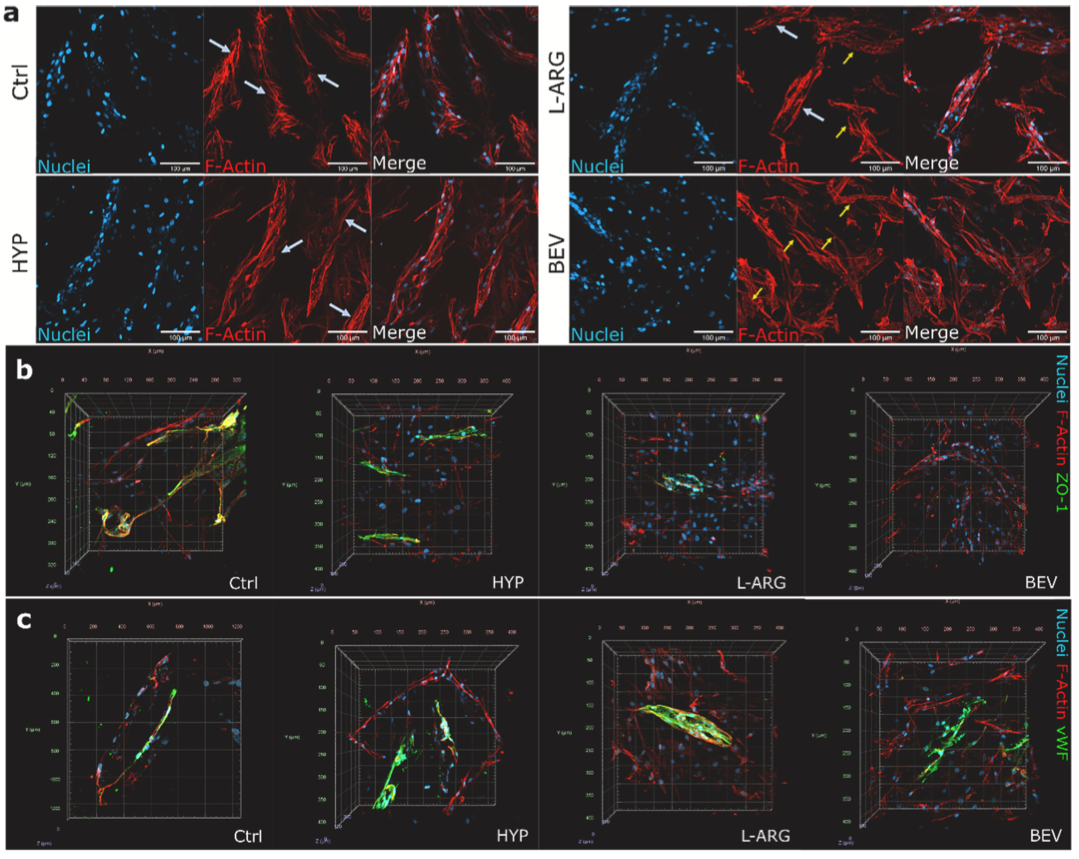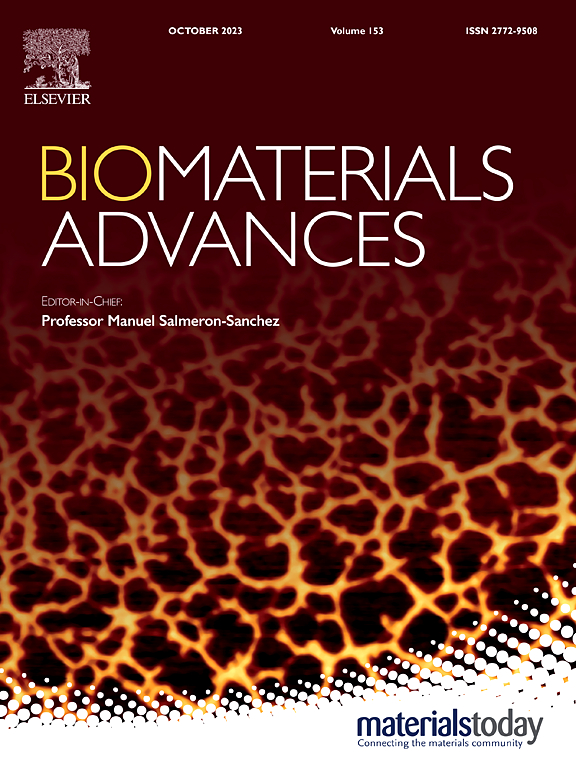Fibroblasts mediate endothelium response to angiogenic cues in a newly developed 3D stroma engineered model
Dellaquila A, Dujardin C, Le Bao C, Chaumeton C, Carré A, Le Guilcher C, Lam F, Simon-Yarza T
2023 • Biomaterials Advances • [pdf]
 Three-dimensional stroma engineered models would enable fundamental and applicative studies of human tis- sues interaction and remodeling in both physiological and pathological conditions. In this work, we propose a 3D vascularized stroma model to be used as in vitro platform for drug testing. A pullulan/dextran-based porous scaffold containing pre-patterned microchannels of 100 μm diameter is used for co-culturing of fibroblasts within the matrix pores and endothelial cells to form the lumen. Optical clearing of the constructs by hyperhydration allows for in-depth imaging of the model up to 1 mm by lightsheet and confocal microscopy. Our 3D vascularized stroma model allows for higher viability, metabolism and cytokines expression compared to a monocultured vascular model. Stroma-endothelium cross-talk is then investigated by exposing the system to pro and anti- angiogenic molecules. The results highlight the protective role played by fibroblasts on the vasculature, as demonstrated by decreased cytotoxicity, restoration of nitric oxide levels upon challenge, and sustained expression of endothelial markers CD31, vWF and VEGF. Our tissue model provides a 3D engineered platform for in vitro studies of stroma remodeling in angiogenesis-driven events, known to be a leading mechanism in diseased conditions, such as metastatic cancers, retinopathies and ischemia, and to investigate related potential therapies.
Three-dimensional stroma engineered models would enable fundamental and applicative studies of human tis- sues interaction and remodeling in both physiological and pathological conditions. In this work, we propose a 3D vascularized stroma model to be used as in vitro platform for drug testing. A pullulan/dextran-based porous scaffold containing pre-patterned microchannels of 100 μm diameter is used for co-culturing of fibroblasts within the matrix pores and endothelial cells to form the lumen. Optical clearing of the constructs by hyperhydration allows for in-depth imaging of the model up to 1 mm by lightsheet and confocal microscopy. Our 3D vascularized stroma model allows for higher viability, metabolism and cytokines expression compared to a monocultured vascular model. Stroma-endothelium cross-talk is then investigated by exposing the system to pro and anti- angiogenic molecules. The results highlight the protective role played by fibroblasts on the vasculature, as demonstrated by decreased cytotoxicity, restoration of nitric oxide levels upon challenge, and sustained expression of endothelial markers CD31, vWF and VEGF. Our tissue model provides a 3D engineered platform for in vitro studies of stroma remodeling in angiogenesis-driven events, known to be a leading mechanism in diseased conditions, such as metastatic cancers, retinopathies and ischemia, and to investigate related potential therapies.

